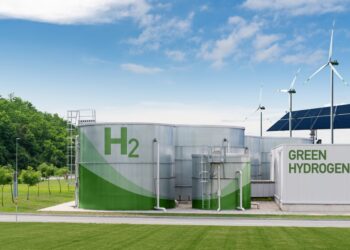
The Namibia Green Industrialisation Agenda (NGIA) is expected to significantly increase household income, potentially adding N$99.4 billion during its investment phase and N$87.9 billion annually once the project reaches its operational phase.
This projection was shared during a panel discussion on the socioeconomic impact of green hydrogen in Namibia, hosted by the Green Hydrogen Programme in collaboration with the Bank of Namibia and the Namibia Statistics Agency.
Mwala Lubinda, a lecturer at the Namibia University of Science and Technology and associate researcher at MONASA Advisories, detailed the expected benefits of the NGIA, emphasising the impact on household income.
“The NGIA could potentially increase household income by about N$99.4 billion during the investment phase and N$87.9 billion per year during the operational phase,†Lubinda remarked.
He said the NGIA aims to create significant income growth, although the distribution will not be equal across all sectors of society.
According to Lubinda, most of the income gains will go to high-income households, especially in urban areas.
“While the income benefits are expected to be substantial, the reality of Namibia’s high-income inequality means that urban high-income households will benefit the most,†he explained.
Lubinda noted that these income gains will be driven by the green hydrogen sector and its associated industries, which will generate jobs and stimulate broader economic activity.
“The majority of the income increase will come from sectors like construction, rail transport, and wholesale trade, as green hydrogen development progresses,†Lubinda stated.
However, the need for careful policy implementation was stressed to mitigate income inequality, ensuring that the benefits of the green hydrogen sector reach a broader demographic.
“The key challenge will be ensuring that the benefits are not concentrated in only a few segments of society. Policymakers need to be proactive in addressing income disparities as part of the broader green hydrogen strategy,†Lubinda added.
The key findings revealed that the NGIA could potentially create about 120k additional employment opportunities during the investment phase and sustain 30k job opportunities per year during the operational phase.
The NGIA could potentially add about N$129 billion additional GDP during the investment phase and N$177 billion additional per year during the operational phase.
The panel discussion on the socioeconomic impact of green hydrogen in Namibia explored its potential to drive sustainable economic growth and social advancement.
At the session, Green Hydrogen Programme Head of Impact and ESG, Eline Van der Linden, said while immediate market entry for underskilled and under-resourced individuals is unlikely, employment growth for better-skilled individuals will lead to positive economic effects.
â€We don’t expect immediate entry into the market for those that are underskilled and under-resourced, but we do believe that as employment increases for those who are a little better resourced and who do have some of the knowledge and some of the skills, we will see some trickle down effects in the economy, and we believe that as the economy grows, we will see higher fiscal income so there will be more fiscal space,†she noted.
The session provided the attendees with an overview of the assessment methodology, including the expanded 2019 SAM, CGE model assumptions such as market behaviour, production technologies, and potential external shocks, and HM model considerations addressing household heterogeneity and income distribution.











